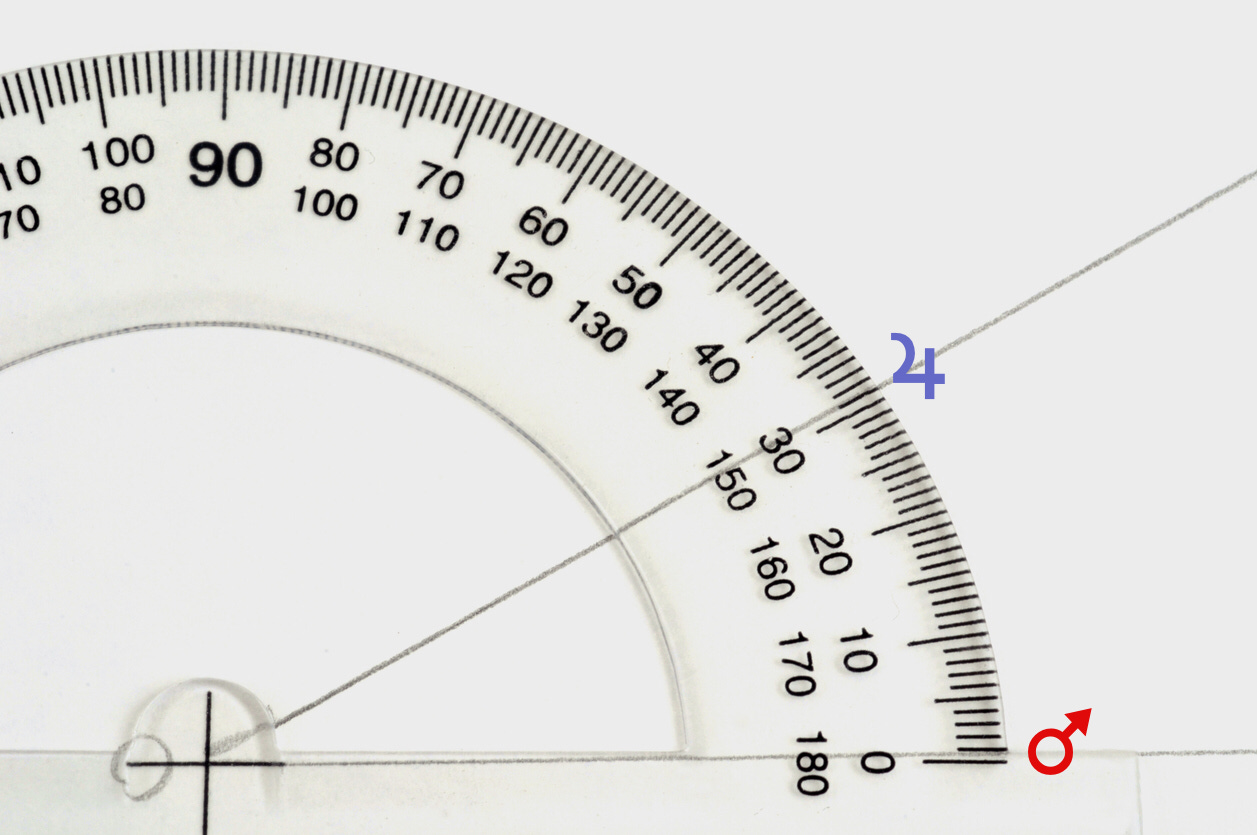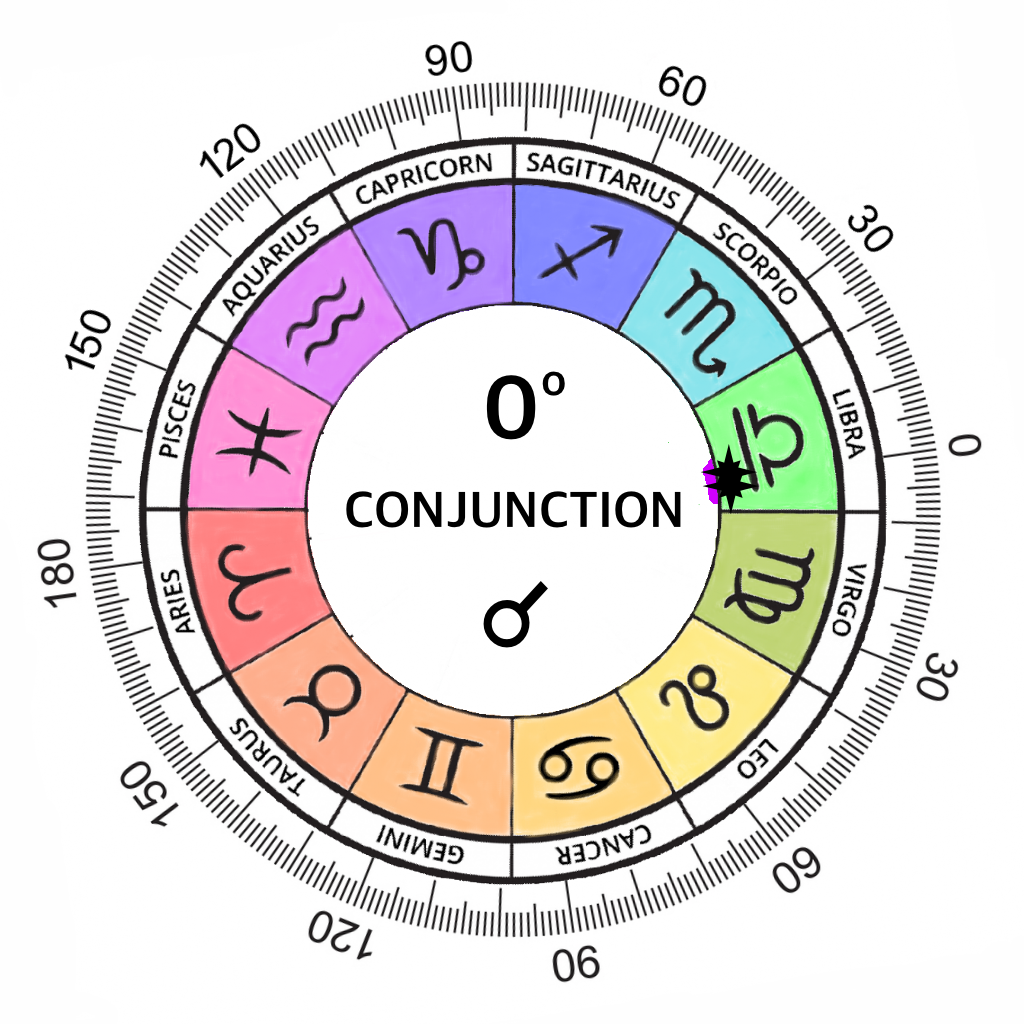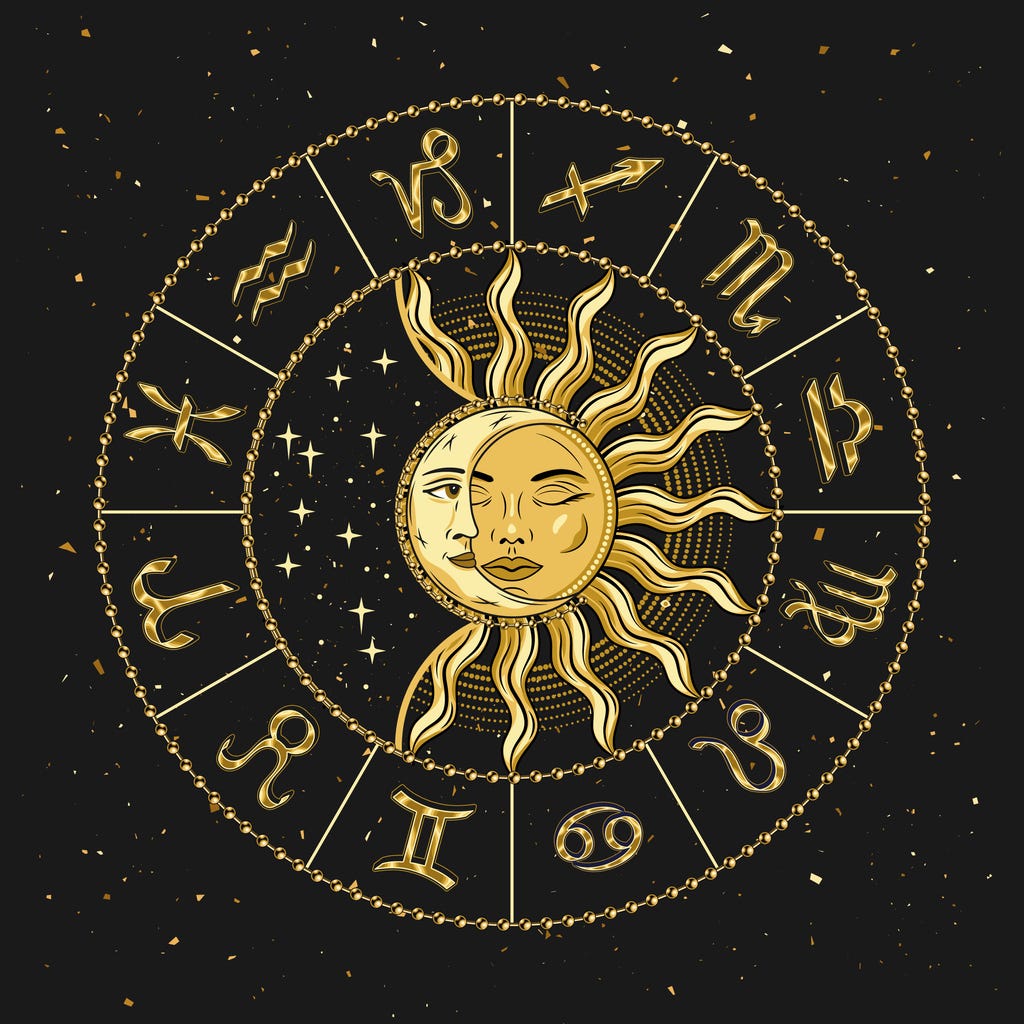Planets, Signs, and Aspects
To interpret an astrological chart, we need to be well acquainted with the planets and what they do. Readers who need introductions or a review can get to know each of the planets commonly used in Western astrology in the Pantheon of Colors series.
Beyond each planet’s basic function are the ways in which its behavior is modified by the Zodiac sign it occupies. Those variations can be found in the Planets in Style series.
Another way in which a planet’s effects can be modified is by its relationships with other planets. Relationships between planets in an astrological chart are called ASPECTS. They are dynamics functioning in the time for which the chart was cast (and continuing to function in any entity born at that time). Neither judgments of character nor predictors of specific events, they are flows and patterns of energy in something like an inner ‘weather map’.
Aspects in General
Of all the aspects with known significance, there are five major aspects that all astrologers use: conjunctions, sextiles, squares, trines, and oppositions. Each signifies a different type of clear, definite relationship between planetary energies. All five of them are in the example chart below, indicated by the colored lines connecting planets. (Not all astrologers use the same color code.)
A modern astrological chart is circular (360 degrees) and Earth-centered. The 12 Zodiac signs shown around the perimeter (30 degrees each) occupy equal sectors of the circle like pieces of a pie. Glyphs of the Sun, Moon, and all the planets (and usually other significant points) as seen from the Earth are shown just inside the perimeter in their respective signs (whose styles they ‘wear’). The numbers by each planetary glyph show exactly in what degree and minute of that sign the planet is located. The example chart above is for a time in early Libra 2025 (simplified with Aries rising and equal houses, not related to any particular place).
An aspect between any two planets is determined by measuring the angle between them. Only certain angles qualify as aspects and are meaningful. They don’t have to be exact, and can be off by a few degrees (the allowed “orb”) and still operate. The closer to exact, the stronger the effect.
There can be many or few aspects in a chart, and sometimes they form meaningful overall patterns, such as the Kite in the Libra 2025 chart above.
Like the planets, aspects indicate raw potentials to be refined for manifestation by the ways in which we choose to handle them. Each is associated with a certain type of experience. Some reinforce our abilities; others reveal conflicts that challenge us to think more deeply and choose more wisely. Our awareness of the qualities of time can make all the difference in the ways our potentials play out, how we experience them, and whether/how we benefit from them.
Transiting Aspects vs. Natal Aspects
Aspects among transiting planets are the temporary energy dynamics that affect us all for limited periods of time. Those involving fast-moving planets operate briefly, for days or weeks, while those between slow-moving planets last for months or years.
Aspects in a natal chart are a ‘snapshot’ of the transiting planets at the time of a birth. They are permanent influences in the life of the person (or other entity) for which the chart is cast.
The energies of our own natal aspects produce certain types of challenge or support that keep recurring in our life. According to the imbalances with which each of us is born, these are individually ‘customized’ to help us become better balanced and centered, more whole. We do this naturally over time, as results of our responses to our natal aspects motivate us to discover more satisfying ways of working with them.
A natal aspect or long-lasting aspect between slow transiting planets can seem to be dormant until it is activated, or “triggered”, by another aspect from a transiting third planet that is faster moving (often Mars).
Conjunctions
The simplest astrological aspect is the conjunction, in which two planets are together in the same degree of the same sign (give or take a few degrees), about 0 degrees apart. The above illustration shows a pair of conjoined planets in early Libra, but they can be anywhere in any sign. In some charts, three or more planets form a string of conjunctions called a stellium, whose complexity indicates an intensification of their influence.
Planets in conjunction have a relationship something like that of conjoined (or “Siamese”) twins. Like any planets that occupy the same sign, they are doing their respective energies in the same style, as though they were playing different roles on the same team, wearing the same uniform. But that’s not all.
Everything that affects one of two planets in conjunction affects the other. If one of them receives an aspect from a third planet in the same chart or by transit, the other shares in that aspect, even though it may not be technically within orb of it.
Planetary ‘teammates’ in conjunction are so close that they influence each other directly, even seeming to blend into each other. Some blends seem normal and natural to us; others not so much. The possible combinations account for the classification of conjunctions as neither harmonious nor disharmonious, but variable in effect.
An example of a normal, natural blend would be a Mercury-Venus combination, a meld of two ways of thinking. Mercury is mobile and communicative, while Venus is sweet and graceful. A combo of these two might manifest as sweet talk, beautiful writing, a pleasant stroll, a gift with a message, etc. — noticeable, but not all that unusual or infrequent.
Other combinations tend to grab our attention because they don’t strike us as normal. The above example from Libra 2025 shows a conjunction of Saturn and Neptune. (They straddle the cusp between two signs, suggesting a conversion from one ‘team’ to another.) This is a particularly weird combination, because the energies of these two planets could hardly be more incongruous.
Neptune is limitless, timeless imagination, ethereal dreams and visions, some of which are impossible or improbable, and others that we wish or fear might come true, or believe to be already true.
Saturn is like a solid stone weight that anchors us to concrete reality and its immutable laws and limitations for as long as we are ‘doing time’ in a physical body.
Usually these two energies coexist separately among the transits, and we have little reason to consider the contrast between fantasy and flagstone. But about every 36 years when they blend in a conjunction, we get a neptunified concrete reality in which our dreams (or nightmares) manifest externally as best they can according to natural laws. Along with that, we get a saturnized imagination that tends to be heavy, materialistic, mechanical, and relatively bleak. We can feel trapped in a paradoxical, surrealistic world that’s both fantastically unreal and all too real.
(More about the Saturn-Neptune conjunction of 2023-2026 in the forecast section of “Libra 2025”)
A conjunction in the transits is a temporary feature of life; a conjunction in a natal chart is a permanent blend that one needs to learn to express well.








